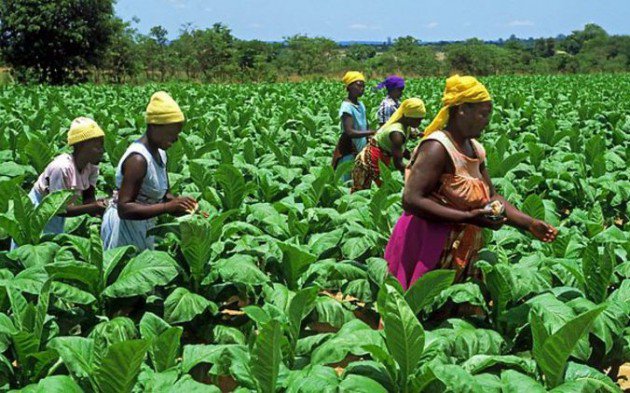
eBusiness Weekly

Enacy Mapakame
Agriculture continues to make headlines in Zimbabwe as some investors look at the fortunes of the sector as a bell-weather for the macro-economy.
In the last few months, the Zimbabwe Stock Exchange (ZSE) leading shares — the Top 10 Index — has measured the most valuable publicly traded companies and it is no surprise that agriculture related stocks dominate the index.
But could this be considered an accurate view of the fundamentals that anchor the Zimbabwean economy? Or at the very least what can this tell us about the health of the economy?
The sector plays a crucial role in the economy’s food security, social welfare, as well as job creation and contributed an estimated 14,6 percent to gross domestic product (GDP) last year, an increase from the 3,7 percent recorded in 2016.
It is estimated agriculture employs over 30 percent of the working population and is a major source of livelihood for more than 80 percent of Zimbabweans.
This is in addition to contributing about 60 percent of raw materials for the manufacturing industry.
Now, on the local bourse, which can be used as an economic barometer, half of the top 10 counters by market capitalisation are agro-based, and this says a lot.
These range from seed manufacturing, tobacco and sugar cane processing, grain milling and crocodile skin production.
Seed Co Limited, British American Tobacco Zimbabwe (BAT), National Foods, Hippo Valley Estates and Padenga Holdings occupy the fourth to eighth position in that order.
Their cumulative market capitalisation amounts to $2,186 billion, which is 18 percent of the total market value of the ZSE.
Share prices of these stocks range from 60 cents to $25, which is the most expensive on the local bourse.
Analysts say the role of agriculture in the economy cannot be over emphasized. For the agriculture and related stocks, their contribution to food security and cash generative businesses makes them stand the economic headwinds.
For National Foods, bottom line and overall profitability has of late improved despite recording a softer top line, largely attributable to weaker sales volumes in stock-feeds and the maize segments.
The firm is seen in earnings growth emanating from the maize milling segment given the expected reduction in maize yield due to a delayed onset of rain and the flooding encountered during the 2017/2018 agricultural season.
Being a regional seed manufacturer, Seed Co limited enjoys market dominance and is spreading its tentacles into West Africa as it maintains its growth momentum. Its partnership with Vilmorin and Cie has given Seed Co more technical expertise advantage.
For Seed Co, regional governments’ thrust on food security has seen an increase in support for input programmes, boosting the seed manufacturer.
Apart from food security, cash crops such as tobacco have always been crucial in Zimbabwe’s agriculture sector as the golden leaf is the highest single foreign currency earner making cigarette manufacturer BAT well positioned to cash in and maintain a dominance on the bourse.
BAT has also been a consistent dividend payer at a time other companies struggled on economic challenges, making the company a favorite for many.
On the other hand is Padenga, whose products are mainly for the export market that is luxury crocodile skins for the high end market.
The bourse has many other agriculture and agro-based counters such as Ariston, Dairibord, TSL and CFI Holdings.
Due to its significant role, agriculture has remained one of Government’s priority areas for support through various input schemes as well as policy interventions that enhance the business environment.
Of late, overall growth of the sector has been spurred by support programmes such as the Command Agriculture Scheme which has seen the sector surpass expectations and managed to achieve its intended purpose of boosting food production and meeting local demand.
This year, the sector is expected to grow by 10,7 percent supported by the successful implementation of the extended command agriculture programme to include soya beans and livestock production and expected good weather conditions.
Its success will also filter down to other sectors which means narrowing the current account deficit and increase self-sufficiency which will enhance the economy.



